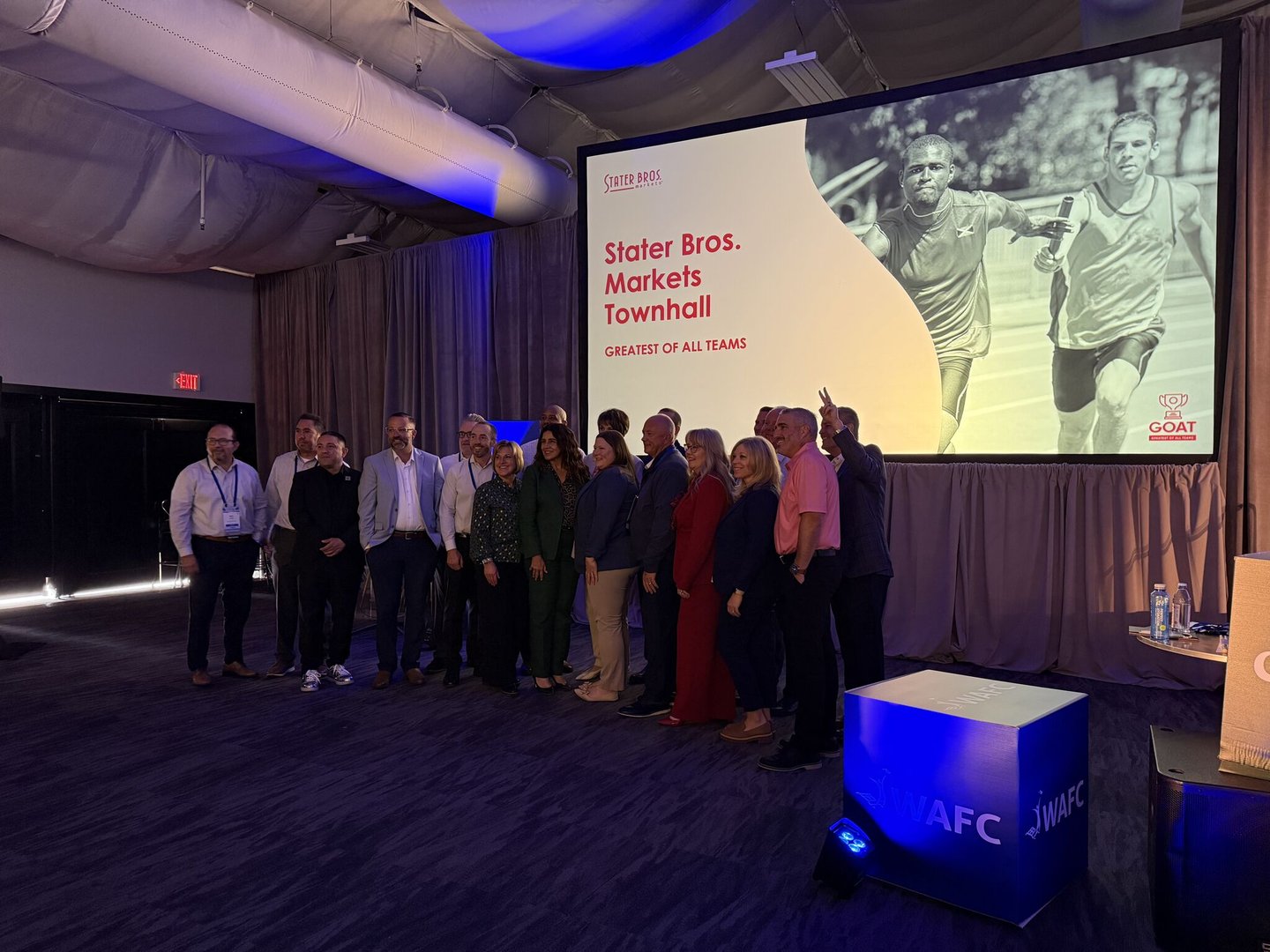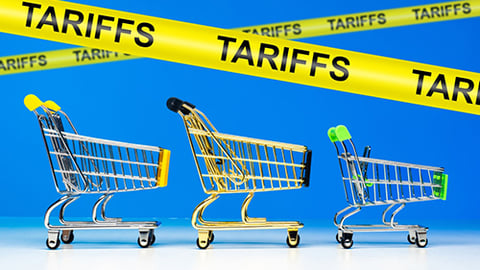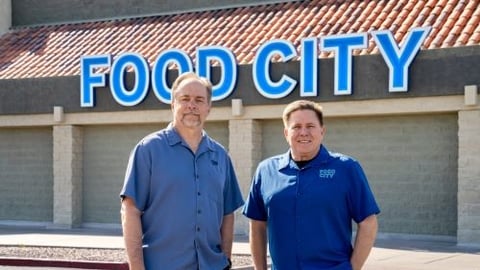How 8 Western Grocers Are Aiming to Win
At the 2025 WAFC Convention in Palm Springs, California, last month, the future of grocery was on full display.
Eight of the most prominent grocery retailers in the Western U.S. – Albertsons Companies, Costco, Food 4 Less, Fred Meyer, Gelson’s, Raley’s, Stater Bros., and The Save Mart Companies – offered a rare glimpse into their growth strategies during a time of accelerating change.
[RELATED: Western Association of Food Chains Elects 2025-26 Leadership]
What emerged during the Western Association of Food Chain's annual meetup, which attracted more than 1,400 attendees this year, were clear themes that unite these otherwise diverse operators: the critical importance of technology, deeper loyalty engagement, a sharpened focus on pricing and promotions, investment in private labels, and a passion for community-rooted retailing. Each retailer said it is navigating consumer demand for both value and experience, and striving to win on trust, relevance and execution.
Here’s how these eight grocery retailers are laying the foundation for long-term growth.
Albertsons: Loyalty and Retail Media Flywheel
The Albertsons Cos., based in Boise, Idaho, is betting big on what it calls the “earn customers for life” flywheel: an integrated model built on digital engagement, loyalty and personalized value. The company now has 45 million identifiable households in its loyalty system, up 15% year over year, and those shoppers spend more, shop more often, and use more channels, Albertsons leaders told the WAFC audience.
E-commerce is also accelerating, with 34% year-over-year growth powered by app improvements, flash delivery, and new features such as real-time customized substitutions. But beyond the transaction, Albertsons is driving digital transformation through its retail media platform, the Albertsons Media Collective, which served 7 billion ad impressions in 2024 and delivered an average return on ad spend of $13.
The company is also focused on localization at the shelf and store level, using loyalty and transaction data to drive smarter assortment and pricing decisions. With Susan Morris assuming the CEO role, Albertsons is signaling a bold new chapter that pairs customer-centric leadership with technology-forward operations.
Costco: Simplicity, Scale and Treasure Hunt
Costco’s strategy remains rooted in its founding principles: limited SKUs, customer value and operational consistency. At $250 billion in fiscal 2024 sales, the retailer continues to lead through scale and simplicity. But behind that scale lies a high-performing regional merchandising structure that enables local testing, faster innovation, and community-specific curation.
With only 4,000 SKUs in most warehouses, Costco leaders at WAFC emphasized their “six rights of merchandising:” the right product, price, timing, placement, condition and quantity in every decision. Their playbook prioritizes high-turn inventory, efficient packaging and tight supplier collaboration.
Costco, based in Issaquah, Wash., is also expanding its digital media capabilities, including social media, digital out-of-home displays, and targeted online banners, to create awareness and support its in-store treasure-hunt experience. Regional buying teams are now coordinating nationally through category task forces, creating consistency across markets while still supporting regional autonomy.
The retailer’s Kirkland Signature private brand continues to grow, driven by trust in quality and pricing, and remains a key lever for differentiation and margin stability.
Food 4 Less: Value and Localization
The Kroger Co.'s Food 4 Less banner is navigating the intersection of affordability, loyalty and cultural relevance. At WAFC, Food 4 Less leadership emphasized a renewed focus on promotional clarity, digital coupons, and hyperlocal assortment planning that meets the unique needs of its diverse Southern California communities.
The chain is remodeling several urban stores with clearer navigation, enhanced produce departments and better price perception. Multicultural merchandising is also a focus, with expanded Mexican, Central American, and Asian offerings to reflect core shopper demographics.
Food 4 Less is using data tools to better align promotions with inventory levels and is experimenting with electronic shelf labels and retail media to improve shopper engagement. By blending the efficiencies of Kroger’s national tech investments with a local, culturally resonant execution, Food 4 Less is creating a value proposition that’s hard to replicate.
Fred Meyer: Regional Synergy and Omnichannel Execution
Fred Meyer’s 2025 strategy hinges on leveraging enterprise capabilities while protecting its regional identity. The Northwest grocer, also part of Kroger, is increasing private label penetration – particularly in natural, organic and general merchandise categories – and integrating more seamless loyalty experiences across store and digital platforms.
Leaders highlighted growth in click-and-collect and delivery services, which are now fully tied into the loyalty ecosystem, enabling more personalization in offers and communication. Fred Meyer’s flexible footprint and expanded store-within-store offerings, including home goods and apparel, continue to differentiate it from more narrowly focused grocery competitors.
Fred Meyer is also leaning into sustainability, focusing on local sourcing, food waste reduction, and energy-efficient store operations. Strategic planning now includes regular input from regional merchants to ensure shelf relevance, especially in fresh and seasonal categories.
Gelson’s: Premium and Health-First Focus
At Gelson’s Markets, differentiation is all about curation, something the retailer’s leaders emphasized at WAFC. Serving Southern California’s high-income and health-conscious shoppers, the grocer is doubling down on exclusive products, premium perishables, and immersive in-store experiences.
Executives cited expanded partnerships with local producers and wellness brands, as well as new signage and digital content that highlight dietary tags like keto, vegan, and gluten-free. The chain’s in-store events, from chef tastings to wellness weekends, reinforce its brand as both a lifestyle destination and trusted curator.
Digital efforts are also evolving. Gelson’s mobile app now offers enhanced personalized offers, digital coupons, and content like recipes and nutritional tips. Rather than chasing scale, Gelson’s is focused on customer lifetime value, emotional loyalty and customer experience at every touchpoint.
Raley’s: Purpose-Led Growth and Fresh Differentiation
The Raley’s Companies continues to evolve as a purpose-driven organization, balancing operational excellence with a mission to promote health, sustainability and community impact. The retailer is modernizing its fleet with more efficient store formats, particularly in underserved markets and high-growth regions.
At the WAFC show, executives highlighted major strides in category reset initiatives, private label innovation, and the integration of health and wellness across the store. Raley’s is also expanding its digital capabilities, using AI-driven forecasting and loyalty data to localize pricing and promotions in real time.
In fresh, the chain is pushing into more prepared meals, culinary experiences, and meal kit options, while simultaneously partnering with farmers and suppliers who align with its values. Raley’s emphasized the importance of staying nimble to respond quickly to shopper behavior shifts – whether driven by inflation, wellness trends, or economic concerns. The company is also focused on accelerating growth and expansion in states where it has locations thanks to its acquisition of the Bashas' Family of Stores.
Stater Bros.: Greatest of All Teams
Departing from a profit-first mindset, Stater Bros. Markets has shifted companywide attention to the customer, emphasizing that sales and profit follow customer growth.
Stater Bros. leaders walked up to the WAFC stage in Palm Springs and explained that the grocer’s customer-first strategy is built on three strategic pillars: digital transformation, elevated customer service and future-focused investment. The core objective guiding this strategy is to deliver the best shopping experience by increasing customer conversion, retention and acquisition – ultimately expanding shopper loyalty and lifetime value.
- Digital Journey: Stater Bros. is undergoing a major SAP transformation and developing a new loyalty program. The retailer is striving to become a data-driven organization, combining insights with experience to make better business decisions.
- Customer Service: A companywide initiative called “GOAT” (Greatest of All Teams) reinforces a culture of service across all touchpoints, from store associates to internal marketing and distribution teams. Stater Bros. also remains committed to its Winning Fresh program and supports the growth of both national brands and private label products.
- Investing in the Future: Stater Bros. is investing in talent, infrastructure, and store formats. The chain will continue opening 1-2 new stores per year, has nearly completed a small-format store refresh, and is focused on evolving multicultural merchandising to reflect its diverse Southern California customer base.
Leadership underscored efforts to improve employee training, backroom processes, and streamlining its merchandising operations. A new loyalty program is in development, with early pilots focused on creating value through personalized offers and gamified engagement tools.
Marketing efforts are now targeting younger demographics through local events, community programs, and improved digital communication. Stater Bros. remains cautious with tech investments, but is piloting tools to support better demand forecasting and reduce shrink in high-volume departments like meat and produce.
The company’s growth strategy is less about physical expansion and more about operational excellence and cultural continuity.
The Save Mart Cos.: Transformation in Motion
The Save Mart Companies is undergoing a radical reinvention following its acquisition by the Jim Pattison Group. The chain is executing a multi-year transformation plan focused on merchandising, operations and digital strategy.
Save Mart has launched a massive center store reset with SymphonyAI, applying AI and predictive analytics to optimize assortment, promotions and shelf allocation. Loyalty systems are also being overhauled, with plans to roll out personalized pricing and digital reward tools across all three of the company’s banners: Save Mart, FoodMaxx, and Lucky.
The company is growing again, acquiring stores in the Pacific Northwest and remodeling its existing fleet with a focus on experience, localization, and efficiency. In rural markets, it’s experimenting with ACE Hardware co-locations to meet broader household needs. Store teams are being empowered to act with more speed, supported by digital dashboards and real-time insights into customer behavior.
Executives described the work they are doing in 2025 as a cultural reset as much as a strategic one, with an emphasis on agile decision-making, customer focus, and entrepreneurial thinking.
From digital innovation to hyperlocal execution, these eight grocers offered a snapshot of an industry in motion. Whether it’s Costco’s precision simplicity, Albertsons’ tech-fueled flywheel, or Save Mart’s wholesale reinvention, each retailer is crafting growth on its own terms anchored by relevance, data and customer trust.
The competitive edge is no longer just about scale, it’s about how nimble and meaningful a grocer can be to its core shoppers. In the West, that means staying deeply embedded in local communities while building enterprise capabilities that scale smartly.
As shopper behavior continues to shift and macroeconomic volatility persists, these companies are proving that transformation in grocery is not a destination but a daily discipline.







